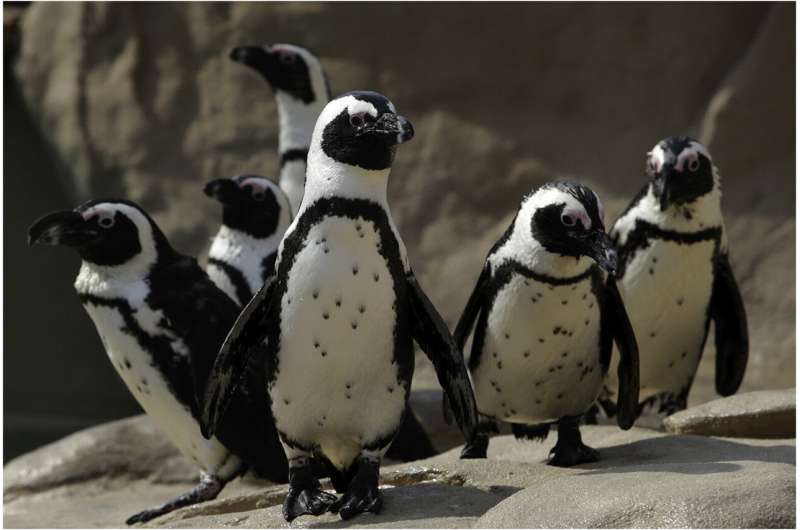November 24, 2023 report
This article has been reviewed according to Science X's editorial process and policies. Editors have highlighted the following attributes while ensuring the content's credibility:
fact-checked
peer-reviewed publication
trusted source
proofread
Black dots on white fronts of African penguins may help them tell one another apart

A team of psychologists and animal behaviorists from the University of Turin, the University of Oulu, and Zoomarine Italia, Torvaianica-Pomezia, has found evidence indicating that the unique assortment of black dots that decorate the mostly all-white fronts of African penguins may serve as a means for allowing the penguins to tell one another apart.
In their paper published in the journal Animal Behavior, the group describes a simple experiment they conducted with a colony of African penguins living at a marine park.
African penguins, as their name suggests, are a species of penguin that live on the shores of southern Africa. They are known to be especially social with one another, leading scientists to study their behavior as a possible precursor to more advanced behaviors such as those that are seen in primates.
One such study, for example, found that they are capable of vocal accommodation, where members of a group learn to speak more like others of their kind, with a different dialect, when exposed to them.
In this new study, the researchers have found evidence that suggests the unique patterns of black dots on their otherwise white fronts allow the penguins to recognize one another.
As a rule, penguins tend to look a lot alike—a rule that applies to African penguins as well. Thus, scientists have wondered how they tell one another apart. In this new effort, the research team heard that workers at Zoomarine Italia, a marine park in Italy, are able to keep track of which penguin is which by memorizing the arrangement of black dots on their fronts. Intrigued, the researchers wondered if that is how the penguins do it too.
To find out, they set up a very simple experiment. It involved building a small enclosure with plywood walls, just tall enough to prevent a penguin from seeing over. They then placed cameras on either end of the enclosure and life-size pictures of two penguins on one far wall. They then enticed a single penguin into entering the enclosure. One of the pictures that had been hung was the mate of the one that had been allowed in.
The researchers recorded the behavior of the penguin as it peered at one picture, then the other back and forth. Next, they repeated the same exercise but this time, both of the pictures were of the test penguin's mate—but one had its dots digitally removed. The exercise was then repeated once more, this time where one picture was of the mate, and the other picture was of another penguin that was not the mate—both with dots removed.
After running the experiment with multiple penguins, the researchers studied the video. In so doing, they found that the test penguin stared more at its mate in the first exercise and at the image of its mate with the dots in the second. But on the third exercise, it stared equally at both pictures, apparently unable to tell which was its mate.
More information: Luigi Baciadonna et al, African penguins utilize their ventral dot patterns for individual recognition, Animal Behaviour (2023). DOI: 10.1016/j.anbehav.2023.10.005
Journal information: Animal Behaviour , Animal Behavior
© 2023 Science X Network



















